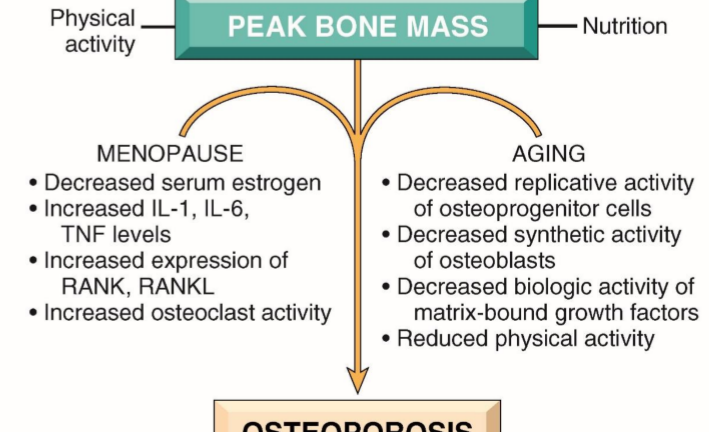Key Factors in Osteoporosis Prevention
Osteoporosis is a severe condition characterized by a significant loss of bone mass.
**Osteopenia**: A condition where bone density decreases.
**Osteoporosis**: A more severe form of osteopenia, where the risk of fractures significantly increases.
Osteoporosis often leads to fractures, such as fragility fractures in the elderly or vertebral compression fractures.
It can be localized, like disuse osteoporosis in limbs, or widespread, affecting the entire skeleton, similar to metabolic bone diseases.
Systemic osteoporosis can be primary or secondary due to various conditions.
Types of Osteoporosis
Osteoporosis can be classified into two main types:
1. **Senile Osteoporosis**: Common in the elderly due to aging.
2. **Postmenopausal Osteoporosis**: Occurs after menopause due to hormonal changes.
Importance of Prevention
Prevention is key in managing osteoporosis.
Once osteoporosis develops, treatment can be challenging.
Preventing bone mass loss is easier and more effective.

Factors Affecting Bone Mass Loss
Several factors contribute to bone mass loss:
1. **Physical Inactivity**: The most crucial factor we can control.
2. **Genetics**: A significant but uncontrollable factor.
3. **Nutrition**: Generally not a major issue in developed countries.
4. **Aging**: An inevitable process that reduces bone mass.
5. **Menopause**: A natural process that can accelerate bone loss in women.
Among these, physical inactivity is the only modifiable factor.
Role of Physical Activity
Bones support muscles, so when muscles and the body are not active, bones have no reason to maintain their mass.
This inactivity leads to osteopenia and osteoporosis.
While nutrition, genetics, aging, and menopause play roles in bone health, physical activity is the key factor we can influence.
Aging and Bone Mass
Bone mass naturally decreases with age. After reaching peak bone mass, slight defects in bone metabolism start to occur.
The average bone loss due to aging is about 0.7% per year, which is a normal and predictable biological phenomenon.
This loss affects both men and women, with a higher prevalence in white populations compared to black populations.
Cellular Changes with Age
As people age, bone cells and the extracellular matrix undergo changes that impact bone metabolism.
Older adults have reduced osteoblast proliferation and biosynthesis compared to younger individuals.
Additionally, the response of bone cells to growth factors attached to the extracellular matrix diminishes in older adults.
Conclusion
Engaging in regular physical activity is essential to prevent osteopenia and osteoporosis.
Exercise before bone loss occurs is critical in maintaining bone health throughout life.
For the original Korean text, visit here.
If you’re curious about the basics of traditional Korean medicine and health, read the following article:
What Your Sleeping Position Says About Your Health
Learn Why Studying JangSang Medicine is Important.
Frequently Asked but Silly Questions (Foods Good for the Liver??)
Thank you for reading.

